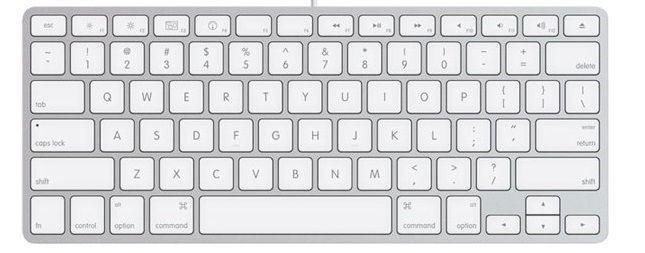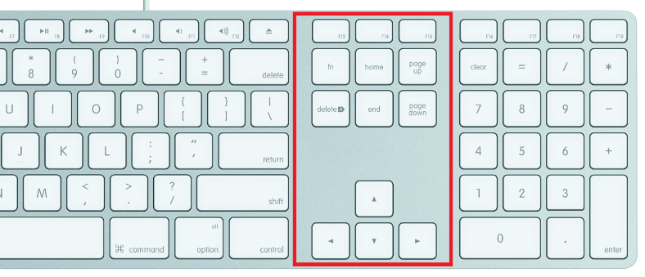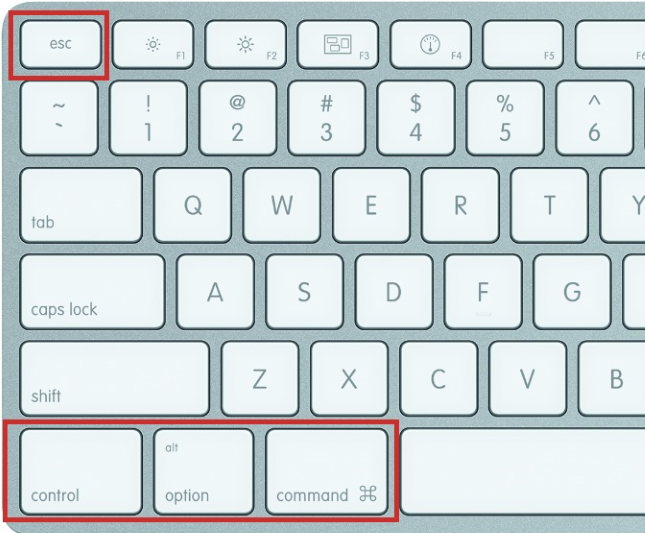 The keyboard is the most important tool for operating a computer. Time to take a closer look at the Mac’s keyboard.
The keyboard is the most important tool for operating a computer. Time to take a closer look at the Mac’s keyboard.
Different keyboards
For Mac computers, there are two different keyboards: one with and one without a numeric keypad. On both keyboards the letters are in the most common order for a keyboard, namely with ‘qwerty’ on the top row. Other formats are: Azerty (Belgium/France) and Qwertz (German-speaking countries).
With numeric keypad
The so-called numeric keypad is on the right side. In addition to numbers, there are arithmetic signs such as plus, minus, division and multiplication. The numeric keypad is useful when you need to enter many numbers, for example on a spreadsheet in Excel.

Without numeric keypad
There is also a keyboard without the numeric part. This can be found on a MacBook. The keyboard is smaller and therefore some keys are ‘hidden’.

Types of keys
The keyboard has several groups of keys, each with its own name. There are alphanumeric keys, navigation keys, special keys, function keys and the numeric keypad. You can read below what this means.
Alphanumeric keys
Alphanumeric keys consist of letters, punctuation marks and numbers. It also includes the space bar. If a key has a function other than what is printed on it, there will be two characters on the button. Whoever presses a key, types the bottom character that is reported. To use the top character, you must simultaneously press the Shift key (the arrow).
In addition to the Shift key, there are other special keys. They are located at the top left and bottom right of the keyboard. The special keys are:
shift
Press this key and a letter to type a capital letter. To type the top character on a key with two pictures, also press Shift at the same time as the corresponding key.
Caps Lock
Press this key to type multiple capital letters, or multiple characters at the top of a key. Press Caps Lock again to turn the feature off.
tab
Use Tab to move the blinking cursor one step to the right. It’s like pressing the space bar several times. When you use the Tab key when typing text, the text is moved to the next Tab position. In a form (for example in Excel) you move the cursor to the next input field with the Tab key.
Enter
Moves the cursor to the next line.
backspace
Delete the character to the left of the cursor or delete the selected text to the left of the cursor.
Navigation keys
Navigation keys are also known as arrow keys. They stand in the middle of large keyboards.

- Arrow keys: move the cursor down, up, left or right. Or use them to scroll on a web page.
- Fn: Activate functions that are ‘hidden’.
- Home: move the cursor to the beginning of the line.
- End: move the cursor to the end of the line.
- Page up: move the cursor up one page.
- Page down: move the cursor down one page.
- Delete: delete a character to the right of the cursor or a selected text.
Control keys
The different control keys are Crtl, Alt/option, Command/Cmd and Esc (escape). Use these keys in conjunction with other keys to activate certain functions.

Function keys
The top row of the keyboard consists of the function keys: the keys F1 through F12 (sometimes up to F19) and icons of functions that Apple associates with a key by default. Each key has its own function(s). For example, F1 lowers the brightness of the screen and F12 increases the volume of the speakers. Function keys can be combined with other keys.
Shortcuts
By pressing keys simultaneously, certain functions are activated or the computer performs certain actions. So-called shortcuts are useful because it saves time and mouse clicks. For example, use Command+X to cut and copy text to the clipboard or Shift+Command+D to open the Desktop folder. Learn how keyboard shortcuts work in the “Using keyboard shortcuts on Mac” article.